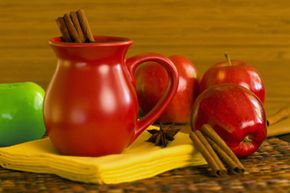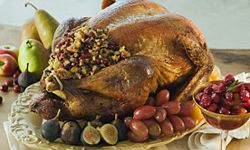Apple cider embodies fall. It conjures up images of hayrides through colorful leaves and the scent of wood-burning stoves. Apple cider has been around for centuries and was an important industry back in the day. Nowadays, it's widely available year-round in supermarkets. But did you know it's also pretty easy to make yourself? Here are some simple instructions for making your very own batch of apple cider.
Equipment
Advertisement
You probably already have most of the equipment you'll need to make apple cider lying around the kitchen. First up: a sharp knife. It's also helpful to have an apple corer, though this isn't mandatory. It will just make things apple easier. You'll also need a blender or a food processor, some cheesecloth, and a container to store the cider in. Voila, that's your equipment list.
Choosing Your Apples
Most commercial apple ciders are made from a variety of different apples. Red Delicious and Fuji make for a sweeter cider, while Granny Smith and Macintosh are tart. When making your own, you can mix it up as you like, or stick to your favorite kind. If you do decide to combine varieties, try to get a mix of red, green and gold for maximum flavor combinations. Cider tastes best when its made from freshly picked apples, so if you don't live near an orchard where you can pick your own, it's worth a visit to your local farmer's market. You want to use the healthiest apples, so avoid ones that are battered and bruised. It takes about 36 apples to make one gallon of apple cider.
Making Apple Cider
Before you start, be sure to wash all of the apples thoroughly. This is especially important if you buy nonorganic apples because you'll want to make sure they're clean of any pesticides. But even if you buy organic, you should give them a rinse to make sure they don't have any dirt that will end up in the final product. Next, you'll want to core the apples. If you don't have an apple corer, you can cut the apple in half and carve out the center of each half. Next, slice the apples into quarters and puree them, peel and all, in the blender or food processor. Keep them whirling until they're finely ground. The finer the pulp, the more juice you'll be able to extract. Now comes the fun part. Spread the cheesecloth over a container of your choice, and pour the pulp into the cloth. The cheesecloth acts as a strainer, so the juice filters through the cloth and the pulp stays put. You'll need to give it some good squeezes to get out all the juice. You can experiment with different spices to add to the flavor. Cloves, nutmeg, lemon peel and ginger are all complementary flavors that can be added to taste, or pop a cinnamon stick in for some holiday flair. If you want to make it a hard cider, add a little rum and brown sugar. If you store it in a container with an airtight lid in the refrigerator, your cider should keep for about seven days. Or, you can keep it for up to three weeks if you pasteurize it by heating it to 160 degrees Fahrenheit (71 degrees. Celsius). But of course, it will always taste best right out of the strainer.
Advertisement


